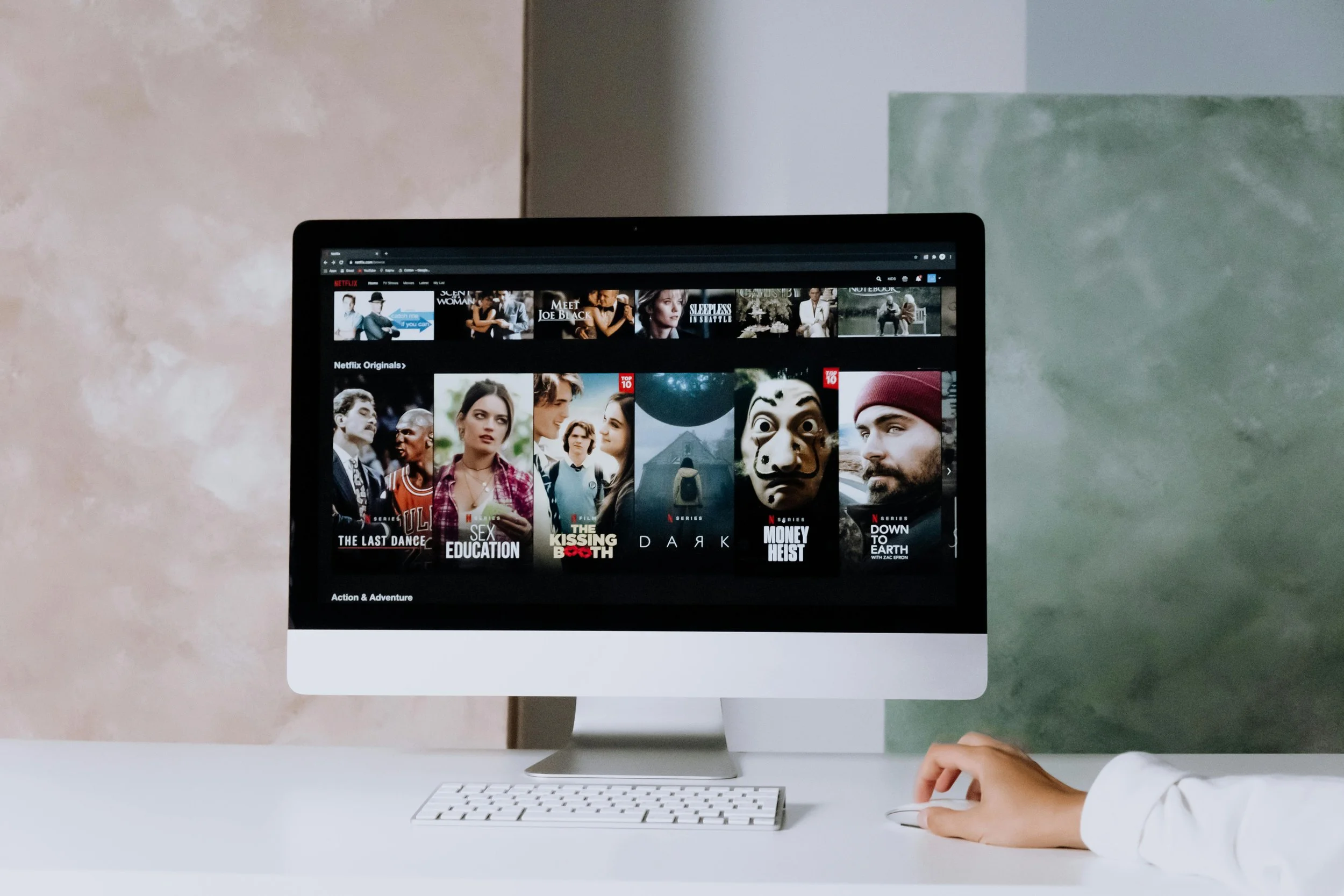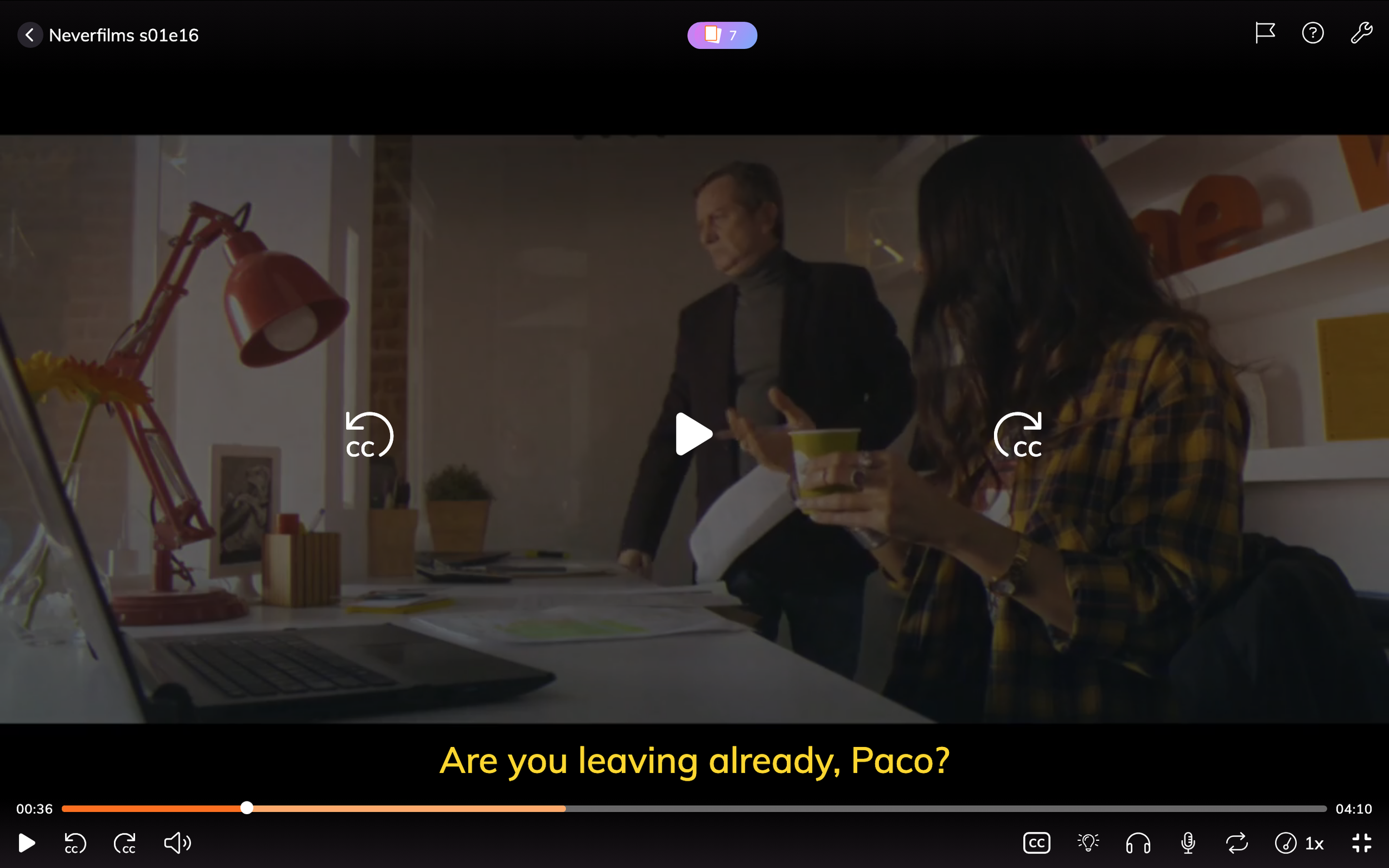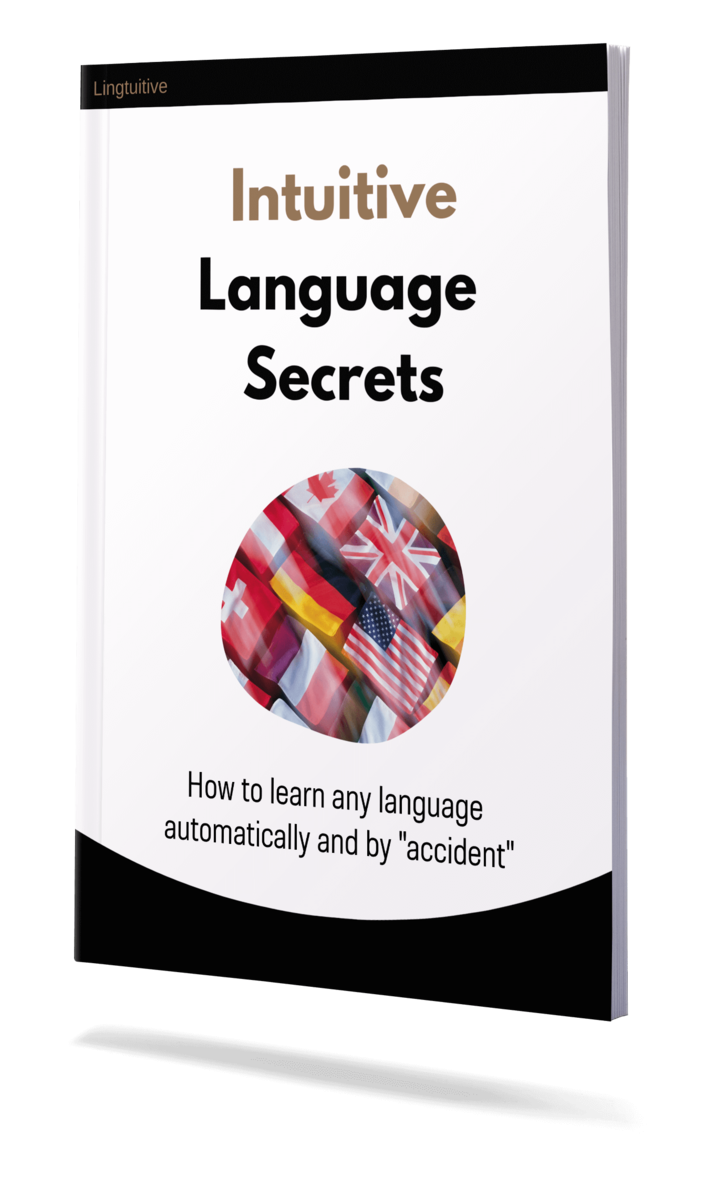The Best Way to Use Lingopie for Effective Language Learning
*This blog is reader-supported. I may earn a commission for purchases made through links in this post. Read full Affiliate Disclaimer here.
Table of Contents
1. Introduction – Your Guide to Using Lingopie Effectively
2. Breaking Down Subtitle Options: How Each Impacts Your Progress
3. Three Different Watching Modes to Learn Effectively With Lingopie
4. Strategies for Using Lingopie at Different Levels
1. Introduction – Your Guide to Using Lingopie Effectively
Lingopie has been gaining popularity lately, and for good reason. I mean, who doesn’t like the idea of combining language learning with binge-watching TV shows? Language learning sure has come a long way since the days of dusty textbooks and rigid grammar drills!
Watching native content is a fantastic way to learn a language, and Lingopie makes it even easier (get 10% off any Lingopie plan here with Lingtuitive’s Exclusive discount). But like any tool, how we use it makes all the difference.
Is it really as simple as watching TV shows with subtitles, clicking on new words, and reviewing them? Or do we need more than that to learn effectively using Lingopie?
To answer this, I put together this guide—to help you learn how to use Lingopie effectively to maximize your language learning.
This Lingopie language learning guide will help you:
Choose the right subtitle setup and understand how each option impacts your language learning.
Get the most out of Lingopie using three different watching modes.
Use Lingopie effectively at every stage—beginner, intermediate, and advanced.
What Makes Lingopie Unique?
At its core, Lingopie centers around its dual language subtitles and various ways we can take advantage of them.
Unlike watching a TV show on Netflix, where subtitles don’t always match the spoken dialogue, Lingopie provides word-for-word transcriptions. This makes it much easier to learn real, natural language from TV shows and movies—without having to second-guess what we heard.
With Lingopie, we can jump from one subtitle to the next (instead of skipping a set 10 seconds). This makes it easier to review specific lines of dialogue, even when subtitles are turned off.
Getting Started: Setting Yourself Up for Success
Before you even hit play, it’s worth thinking about why you’re using Lingopie and what you actually want to achieve.
Lingopie is ideal if you want to:
Understand TV shows, movies, and programs in your target language—without subtitles.
Have fluent, natural conversations with native speakers.
It won’t directly improve your speaking skills (for that, I recommend the AI conversational tutor at Langua—read my in-depth post about it here) but when used correctly Lingopie will lay the groundwork for your speaking in two main ways:
It will improve your listening comprehension, so you can understand natives (it’s tough to respond if you don’t know what they just said!)
You will internalize the language—making speaking develop much faster, since you just need to learn how to output the language that’s already inside of you.
At first, it might feel overwhelming, since your brain needs to process spoken language instantly and effortlessly, which takes time to develop. But when you reach the point where you can turn on a TV show and understand it without even trying, it’s an incredibly rewarding feeling.
2. Breaking Down Subtitle Options: How Each Impacts Your Progress
With Lingopie, we have the option to watch four different ways:
English-Only Subtitles (or your chosen base language, set as the “interface language”)
Dual Language Subtitles
Target Language-Only Subtitles
No Subtitles
Each of these four modes will reach—or in some cases, fail to reach—completely different goals. However, they are all useful for different purposes. Let’s go through each one so you when to choose to which one.
Watching With English Subtitles
Most of us have used these all our lives to watch foreign language content. But let’s be honest—has it ever helped you learn a language? Probably not.
Why?
When watching a show in our target language—lets say German—with English subtitles, our brain prioritizes what it sees and filters out the German dialogues as background noise. Our focus is then on reading English, not processing our target language!
This makes English-only subtitles the least effective setup for learning with Lingopie. Sure, you might pick up a word occasionally, but not enough to make any meaningful progress. You’ll only recognize high-frequency words that appear in isolation, such as “wait!” (I have watched enough Japanese anime to know that it’s “matte!”, but my Japanese skills don’t go much beyond that).
If you want to improve, turn them off. It might feel uncomfortable at first, but getting used to that discomfort is part of language learning.
That said, English subtitles aren’t useless—they serve a key role when used strategically. We’ll cover when and how to use them effectively in the next sections where we talk about learning modes and how to use Lingopie at different levels.
Watching With Dual Language Subtitles
These are slightly better than English-Only subtitles since they at least have Target Language Subtitles too.
However, unless you’re really good at ignoring the English subtitles (which is hard for most, but not impossible), you probably won’t see much progress using these.
The temptation to look at the English ones is too great since it’s, well, easier. And we tend to go towards the path of least resistance, rather than to challenge ourselves. But to improve our abilities, we need to be exposed to our target language without English getting in the way.
For this reason, I’d recommend keeping Dual Subtitles OFF. That said, they are helpful to quickly turn on when you want to check the meaning of a full sentence. Since context is everything and words take on different meanings depending on how they’re used.
Watching With Target Language Subtitles
Now that we have removed the English subtitles, we’re actually engaging with our target language. Now we’re finally learning! We’re getting a visual confirmation of what is being said, which makes processing the language easier than listening without subtitles.
But keep this in mind:
When reading and listening at the same time, our focus is on reading. That means we’re primarily improving your reading, not your listening skills.
This isn’t a bad thing—reading is the best way to build vocabulary, and knowing a lot of words is one of the biggest keys to understanding well in our target language. But if we rely too much on subtitles, the gap between what we understand when reading and when purely listening will be too wide. It’s quite discouraging when we actually know all the words, but we still don’t understand them when we hear them spoken (it’s a common issue).
Want to test this? Turn off the subtitles, and compare how much you understand without them. If your comprehension drops significantly, your reading is way ahead of your listening.
The good news? You can close that gap by using ‘Intensive Listening’ and ‘Binge-Watching Mode’ (A.K.A. ‘freeflow’) —which we’ll cover in detail later.
Watching Without Subtitles
Watching without subtitles is without a doubt the best way to train our ears and push our listening skills to the next level.
We’re now relying completely on our ears to understand. This is essential because, in real conversations, there are no subtitles to help us.
That said, this is also the most challenging way to watch. And if it was as simple as only watching without subtitles then what do we need Lingopie for?
Think of subtitles as a bridge—they help us transition from needing their support to understanding without them naturally. This process is exactly what we’ll break down how to do next!
3. Three Different Watching Modes to Learn Effectively With Lingopie
Now that we know the benefits and drawbacks of each subtitle setup, what’s the best way to learn with Lingopie? To be a good listener, it requires us to work on different skills within the area of listening.
To develop this, we will next talk about three different ways—or ‘modes’—of watching that we can use to learn with Lingopie.
These three ways of watching not only keep things fresh by giving us variety in our learning, but they target completely different skills that are all essential to being a good listener and comprehending our target language accurately.
Vocabulary Expansion Mode
This is probably what most people will instinctively do when they start using Lingopie. We’re watching with target language subtitles, clicking on words we don’t know, and reviewing the vocabulary using flashcards and word games like ‘Pop Quiz’ in between episodes.
This is a great way to grow our vocabulary—which is key—since understanding becomes easier the more words we know.
How to Do It
Keep target language subtitles ON. This mode relies heavily on reading, which is totally fine because reading is one of the best ways to expand your vocabulary. (Check out The Blueprint to Spanish Fluency Part 1: Reading Books and I Learned 100,000 Words in Finnish Using LingQ for more on this.)
Click on words and phrases you don’t know and check what they mean, which will instantly save them to your Lingopie flashcards.
Optional: Right after each episode, quickly review the words you’ve collected using Lingopie’s ‘Pop Quiz’.
Tips for Success
Be patient—Growing our vocabulary to thousands of words is a long process. However, knowing the words, being able to ‘hear’ them, and instinctively understanding their function in a sentence (grammar) is really all there is to understanding our target language.
Choose your review style—either as flashcards between watching sessions, or simply by encountering them again in another context. There’s no harm in looking up the same word many times!
The Trade-Off
While this is an excellent way to grow our vocabulary, which helps lay a foundation for our listening, it’s not the best for training our ears. That’s why the next two modes will focus on improving exactly that.
Intensive Watching Mode
This is the most intense watching mode. However, it’s also when we’ll push our listening ability the most. This mode significantly improves your ability to keep up and understand fast native speech as it will help your brain to process all the sounds and syllables.
I originally learned this mode from Refold’s Level Up Your Listening course (which was a major turning point for improving my listening game - read my in-depth course review here), but I have since adapted it for use with Lingopie.
Since you’ll be pausing and rewinding a lot for this one, using a laptop is best (it’s kind of a pain to do on the phone)—keyboard shortcuts will make the process much smoother.
The goal? Train your ears to hear everything—by giving your brain a chance to process it, so that listening comprehension eventually becomes natural and effortless.
How to Do Intensive Watching
Turn off subtitles. Start with just the audio.
Listen to one sentence at a time. Enable Auto-Pause to make this easier.
Did you understand it?
✅ Yes? Move on to the next sentence.
❌ No? Follow these steps:
Replay sentence up to three times (press [SPACE] to play/pause, [←] and [→] to rewind).
Still unclear? Press [X] to turn on target language subtitles.
Still struggling? Click on words you don’t understand.
Sentence still not clicking? Press [C] to enable English subtitles for full context.
Optional:
Having trouble hearing all the words? Use the [<] [>] keys ([,] [.] on European keyboards) to slow down the audio if a section is really difficult to understand. Hearing it slowed down will help your ears to pick out the all the sounds and give it a chance to process them. Once you’re able to, you should be able to hear them at regular tempo.
Grammar confusing? Click the lamp icon for an AI grammar explanation.
If, after all that, the sentence still doesn’t make sense—just move on. Some sentences aren’t worth the time. They’ll be easier to pick up down the line anyway once your overall listening improves.
Tips for Success
Keep listening the main focus—the most important thing is not to finish the above steps, but to get repetition of difficult-to-hear sentences to give your ears a chance to process them.
It’s intensive—expect to get tired faster than with other methods. But know that even a little bit of intensive listening goes a long way.
Master the keyboard shortcuts—for a smoother experience.
It’s a slow process—don’t be surprised if it takes 2x, 3x or 4x the time it would normally take to go through the same piece of content.
A little goes a long way—you’ll be surprised how quickly this mode improves your listening ability, especially if you’ve never done it before.
The Pay Off
This method takes effort, but what’s the payoff? Massive improvements in your listening ability. It helps our ears naturally focus when listening as this mode helps them “tune into the language”.
To try this, do intensive watching in the morning for at least 30 minutes, then watch an episode of something without subtitles in the evening. You’ll notice that your focus and ability to process the sounds and words in the language is easier than before. Even if you don’t notice an immediate improvement, you’ll definitely see clear progress after a few weeks of consistent practice.
Want to know how learning how to spot fake money
has to do with language learning?
Learn this and more in my guide
“Intuitive Language Secrets”
(currently Free to download,
but might not be available forever,
so make sure to grab it right away!)
Binge-Watching Mode (A.K.A. ‘Freeflow’)
'Binge-Watching Mode’ is the complete opposite of intensive watching. Instead of going deep on details, we’re going for quantity and letting the language just wash over us—training our ears, reinforcing vocabulary, and improving our ability to follow native content effortlessly.
This mode, also known as ‘Freefow’ (a term I also borrowed from the Refold Listening Course), is when you acquire the language. This is when the language becomes intuitive and instinctive. You’ll understand without trying and without analyzing.
No pausing. No looking up words. No subtitles. Just listening.
This isn’t about understanding every word—it’s about learning to let go of what we don’t understand and still keep watching. Even though it might not feel like it, you’re improving your listening skills in a very significant way.
Do You Even Need Lingopie for This?
No. Any show without subtitles works. But Lingopie does make it easier if you’re rewatching something you previously studied in Intensive ‘Watching Mode’ or ‘Vocabulary Expansion Mode’, or you want to first watch using this mode before using the other two modes. Also, you do have the option to occasionally look up a word without disrupting the flow too much.
Binge-Watching Mode is NOT Passive
This isn’t mindless background watching. It requires focus, but it’s a different type of focus than in ‘Intensive Watching Mode’. Here, we’re not deliberately pushing ourselves to hear everything. We’re just letting the language come to us without forcing it. Once you get used to watching this way, it’s surprisingly relaxing.
Tips for Success
Volume is key. The more you watch in this mode, the better. And since you can do it chilling on the couch, you can do it after a day of hard work even when you’re tired.
Don’t try to understand. Just focus on hearing the words and sounds. Your brain will convert what it recognizes into meaning without you trying to.
Embrace the ambiguity. It’s hard to do when you’re not used to it, but it’s important to let go of what you don’t understand. Just keep watching and listening—your brain will improve its ability to process the language and fill in the gaps over time.
The Pay Off
This mode is, in many ways, the most important mode. Because in the end, it’s the mode you’ll be spending the most time on, or at least should. Especially after a certain stage. The other two modes are about serving this watching mode and making it more comprehensible when in a binge-watching-freeflow-state.
It’s not a mode where we’ll necessarily learn a ton of new vocabulary. However, the better our level gets, the more we’ll be able to pick up the meaning of words from context alone. That said, learning a word is a spectrum, not just “known” or “unknown”. By getting massive exposure through ‘Binge-Watching Mode’, you will strengthen words you know on a weak level and make them strong.
4. Strategies for Using Lingopie at Different Levels
The approach to using Lingopie should evolve with our skill level to get the most out of it.
Here are ideas for strategies for how to approach learning with Lingopie at different stages of your language learning.
These are general guidelines, as there are no clear-cut lines for different stages of our language learning. But they can help you how to adjust your learning as you progress.
Beginner: The Training Wheels Phase
When you’re a complete beginner, everything in the language is incomprehensible. For this reason, Lingopie might not be ideal for most complete beginners. However, it can absolutely work and be effective. Just be aware that you need patience to overcome the initial stage of not understanding anything. Once you get to upper beginner, things start to feel easier.
If you’re using Lingopie from the very start, here are some things to keep in mind:
Start with easy content – Filter content by “Easy” in the content search function.
Go for shorter episodes – Filter content by “Short”. This makes learning feel more manageable with smaller, bite-sized pieces of content.
Rewatch episodes – As a beginner, new words need a lot more repetition before they stick. Repeating the same content multiple times will give your brain a chance for new words to sink in.
Slow down the audio (but not too much) – If needed, drop the speed to 0.9x or even 0.8x. Don’t go lower than that (unless you’re temporarily trying to hear a specific tricky-to-hear sentence) as it will sound too unnatural. The goal is to get used to real natural speech.
Keep target language subtitles on – This makes it significantly easier to follow along.
Practice watching without subtitles too – Don’t stress about understanding everything or even anything. Just focus on hearing the sounds and getting used to the rhythm of the language. It will benefit you in the long run, and you will prime yourself to learn words by simply learning to hear them, even without knowing what they mean yet.
Expect it to be challenging – You’re still building foundational vocabulary and getting used to a completely different language. Give yourself time and grace to get used to it.
Focus on what you understand (and not what you don’t) – Be thankful for the words you have learned. It’s proof that you are learning and will continue to learn if you just stick with it.
Get extra exposure with Lingopie’s word games – ‘‘Flashcards’ and other games are great for repeating key vocabulary, which is essential for beginners.
Use multi-approach to content – Rewatch the same episode using the different modes to hit different aspects and keep it interesting. There are several ways you can do this, and feel free to play around with the order, but here’s an example:
Watch a piece of content with ‘Vocabulary Expansion Mode’ to get an overview and pick up new words.
Watch the same piece of content with ‘Intensive Watching Mode’ to tune in your ears and go deeper into the content, just
Watch it all the way through without subtitles and without stopping in “Binge-Watching Mode”.
Intermediate: You’ve Gotten Your Feet Wet
At this stage, things are starting to get more comprehensible. Vocabulary sticks faster and while you still benefit from repetition, you don’t need it nearly as much.
In many ways, this stage is the sweet spot for using Lingopie. Your learning is now more flexible than in the previous stage and the fun is increasing.
Watch more, rather than the same content – Instead of rewatching the same episodes, consume more content, so you can hear the same vocabulary and phrases used in different context.
Embrace ambiguity – You’ll still encounter a lot unfamiliar words and sentences. Practice letting go of the things you don’t understand and go for the low-hanging fruit first.
Have clear daily goal – At this stage, you may think like you’re not improving as quickly as before. However, this is not the case but just how it seems or feels. Rely on every-day, clear, time-based goals (for example, watching 30 mins in ‘Binge-Watching Mode’ and 15 mins in ‘Vocabulary Expansion Mode’ every day). That way, your learning is based on things you can control, rather than what you can’t.
Balance subtitles and no subtitles – Target language subtitles are helpful, but be sure to watch without subtitles too so your listening skills improve. A good rule of thumb is to watch 50% or more of your content without subtitles.
Skip the flashcards – Because you’re more focused on volume, consider dropping flashcards and other word games. You tend to get enough repetition of key vocabulary from content alone.
Add in other forms of listening - Add in pure audio in the form of podcasts, or listening through previously watched episodes (or episodes you’re about to watch) while doing house chores like the dishes, cleaning, etc.
Advanced: Dang, You’re Getting Good
Now that you’re at a high level, Lingopie becomes more about fine-tuning our listening skills. Word lookups, while still helpful here and there, aren’t as necessary as we’ll still be able to learn new words from context alone to a greater extent. Watching native content is becoming more and more effortless, which makes it significantly easier to spend time immersing in the language.
However, there are still words we don’t know, and at this stage, it’s about filling in the gaps of less frequent vocabulary. This helps us move from a general understanding to a more nuanced and detailed one when watching content. As a result, you'll be able to follow plots and dialogues in more depth, which will make watching content even more enjoyable!
Watch without subtitles – ‘Binge-Watching Mode’ should now be your default watching mode.
Use subtitles only for confirmation – If you mishear or don’t understand a sentence, quickly check the subtitles—but don’t rely on them.
Leverage intensive listening – Since you should now understand more sentences than you don’t, focus on the ones that trip you up. Re-listen a few times until they click.
Consider adding Flashcards back in – Flashcards can now become a helpful tool to “fill in the gaps” of low frequency words that you want to learn but maybe won’t encounter enough often to learn them. These words can be saved when doing intensive listening. It can even be done when in ‘Binge-Watching Mode’ if you keep it to one look-up every 2 minutes or so.
Enjoy the process! – At this level, watching TV shows in your target language should feel much more effortless. Even though you might still have areas you want to improve, enjoy the fruits of your labor and how far you’ve come!
5. Final Thoughts
Lingopie is not as much of a language learning method as it is a set of tools to make watching and learning from foreign language content more accessible.
There are many ways you use Lingopie depends on your level, goals, and preferences. Feel free to experiment with, tweak, or even combine the watching strategies talked about in this post. The important thing is that you make them work for you. An enjoyable method is often better than the perfect method, as the former we want to do and the latter we try to avoid.
In the end, it’s the consistency that will ultimate bring you the results you want. And there’s nothing more motivating than when you feel you’re progressing in your target language!
Immersion is challenging but should be enjoyable at least the majority of the time, so make sure you have a good time doing it! When you are, spending time with the language and watching native content becomes something you look forward to.
Magic happens when you just spend time immersing in the language and letting the language come to you and become part of your unconscious.
To try out the different strategies in this post, click on the button below to sign up for a 7-Day free Lingopie trial. This link will also give you access to Lingtuitive’s exclusive discount which will give you significant savings on every Lingopie plan:
Still have questions about how to use Lingopie? Write them in the comments below and I’ll do my best to answer them!










